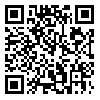Volume 4, Issue 1 (2015)
JFST 2015, 4(1): 1-18 |
Back to browse issues page
Download citation:
BibTeX | RIS | EndNote | Medlars | ProCite | Reference Manager | RefWorks
Send citation to:



BibTeX | RIS | EndNote | Medlars | ProCite | Reference Manager | RefWorks
Send citation to:
Effect of light intensities on reproductive parameters in Artemia urmiana during rearing period. JFST 2015; 4 (1) :1-18
URL: http://jfst.modares.ac.ir/article-6-4447-en.html
URL: http://jfst.modares.ac.ir/article-6-4447-en.html
Abstract: (8697 Views)
The effect of four light intensities (0, 100, 2000 and 5000 lux) on some reproductive charachteristicsof Artemiaurmianabroodstocks was investigated. 30 male and female individuals were reared in 3 liter containers until the death of all females over the consecutive weeks. Results showed significant differences in terms of average weekly offspring productions among the treatments. The broodstocks cultured in 5000 lux had an increasing trend in offspring production from the first to the fifth week, but a decreasing trend from the sixth to the tenth week. A relatively similar situation was observed in the 2000 lux treatment. The broodstocks cultured in 0 and 100 lux intensities had reduction fluctuations in offspring production from the first to the sixth and seventh weeks, respectively. The highest percentages of egg-sac females were observed in the early and mid-raising weeks, showing the maximum in the mid-week (until the fifth week) in all treatments. In most weeks, a considerable increase was detected in the encysted embryos production in the broodstocks reared in 0 and 100 lux intensities as compared with 2000 and 5000 lux intensities. The survival percentage of broodstocks at the end of the fifth week was 95, 86, 23 and 30 % (in order from high to low levels of light intensities).Considering the increased production of offspring and higher survival rate in the broodstocks as well as the increase in egg-sacsfemales (during the first five weeks), it is recommended that the light intensity of 5000 lux is useful for the mass culture of A. urmianain hatchery reared broodstock.
Keywords: Artemia urmiana, Light intensity, Artemia urmiana, Offspring production rate, Cyst production, Live food
| Rights and permissions | |
 |
This work is licensed under a Creative Commons Attribution-NonCommercial 4.0 International License. |







